|
Recent Entries to this Blog
Why I love Holland so much.
Posted: 19 May 2006 Posted: 24 Sep 2007 Posted: 22 Sep 2007 Posted: 21 Sep 2007 Posted: 06 Sep 2007 All Entries |
eileen's Blog
Peonies.
Category: Holiday pics 2007. | Posted: Sat May 19, 2007 10:49 pm While in Holland Ian and I visited De Tuinen at Appeltern with Clint and Ina. There were some gorgeous peonies there that I simply couldn't resist taking photographs of. I'm afraid there were no name tags on any of the plants but it makes them no less beautiful. Here they are: 
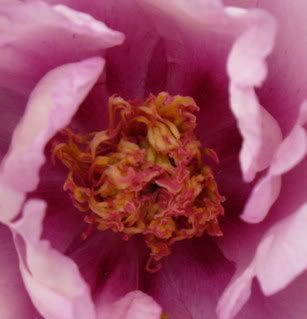
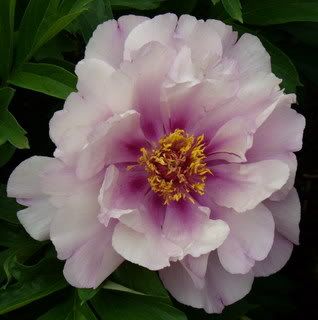






Peonies were never one of my favourite flowers (the blooms never seem to last very long) before visiting Holland but I'd love to have just a few of the ones above wouldn't you? Last edited: Sat May 19, 2007 11:35 pm This blog entry has been viewed 1369 times
All things bright and beautiful.
Category: Around our garden. | Posted: Tue May 01, 2007 2:12 pm Just before Ian and I leave on our trip to Holland I thought I'd post a few photographs for you all of some of the plants and flowers in our garden. Primroses. 
Water buttercups in our pond. 
Little pear tree. 
Grape hyacinth and white anaemone. 
Euphorbia. Can you spot my little Dooley? 
Red acer. 
Strawberries in flower. 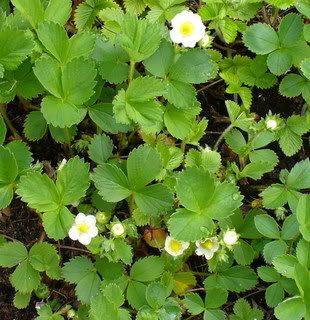
Quince bush flowering VERY early. 
Thrift. 
Bluebells. 
Pieris. 
Bleeding heart. 
Tulips. 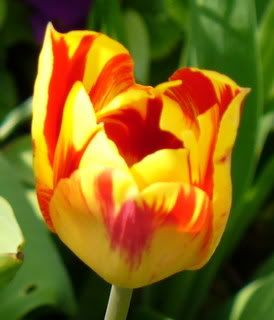




Lavender. 
Azaelea. 
Peony rose. 
Some of my clematis ready to flower. 

Lily, iris and others. 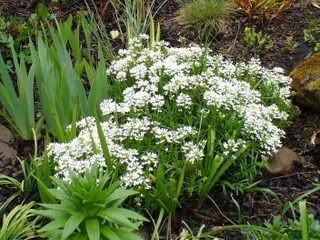
I think I'll leave it there before I bore you all too much. This blog entry has been viewed 1628 times
Vine weevils.
Category: Gardening tips. | Posted: Tue Apr 24, 2007 12:48 am Many gardeners here in the UK are already beginning to find their plants under attack from these nasties so I thought I'd write a bit about them which may help you recognise the damage they do and how best to deal with them. The grubs of the VW will attack the roots of almost any young plant in a container so beware!! They are especially fond of primulas and cyclamen for some reason. Plants in the soil are less at risk but are by no means safe from them. How do you know you have a VW problem? Your plants will be stunted and will quickly turn yellow and wilt. Unfortunately, at this stage it's usually too late to save them. For an advance warning that vine weevils are about, look for notches bitten out of the sides of leaves by the adult beetles. What does a vine weevil look like? The adult weevil is a dark, oval-shaped insect approximately half an inch in length with a blunt snout and long, distinct antennae. In North America, all of the adults are females so every insect has the ability to cause and infestation. Feeding occurs at night; the adults do not fly but instead need to crawl up plants. The larvae are off-white in color with dark heads and can also do extensive damage as they feed on plant roots. When to look out for them. The adult weevils emerge from the soil in late May or early June through to mid-July. These adults feed for 4-5 weeks in order to produce the 300+ eggs that are dropped into the ground under the plant. The eggs hatch within 2 weeks and the larvae then tunnel into the soil where they feed on plant roots. They then tunnel deeper into the soil to protect themselves from frost and pupate in the spring. Understanding the lifecycle and feeding practices of the weevil is the key to keeping the pest under control. Since adult weevils feed on leaves during the night and look for dark, moist spots during the day to rest, trapping them in these areas can be quite effective. Some tips on how to control vine weevils. Simply place a white drop cloth under your plant in the evening or early morning and shake the leaves this will help to catch many of the adults. During the day, place a board under the plant. Check the board for hiding adults and scrape them off into a bucket of soapy water. The eggs and larvae of the black vine weevil require moisture to survive. If your plants are heavily mulched, pull back this mulch to allow the surface of the soil to dry out and do not water plants unless necessary. Using Nematodes to conttrol vine weevils. Rather than attacking the adults, beneficial nematodes go after the larvae in the soil and are a safe and natural method of controlling vine weevils. Follow the instructions to the letter and you should find they really help to reduce or eradicate the weevils from your garden. Simply type 'Nemasys Vine Weevil Killer' into your search engine to find suppliers. This blog entry has been viewed 2757 times
Last of my reasons for liking Holland soooo much.
Category: All things Dutch. | Posted: Fri May 19, 2006 3:08 pm The Dutch plants are all approximately 1/3 of the price that I can buy them here in Britain. It's just as well we own a 4x4 Renault Kangoo because it comes back loaded with plants each year. The customs officers now just roll their eyes and grin at me saying, "Bye Bye, see you again next year!!! Some of last years booty: only around a 1/4 of what we brought back. What's that you say? I'm a plantaholic!! Yes and extremely proud of it!!! LOL This blog entry has been viewed 1301 times
Keukenhof public gardens in Holland.
Category: All things Dutch. | Posted: Fri May 19, 2006 3:02 pm This has got to be one of my favourite places in Holland. Soooo much colour and so much scent. I could happily pitch a tent there for the whole week if only they'd let me. LOL 









Well I hope you all enjoyed my Dutch photographs. No doubt there will be many, many more to come as we're probably going back there again later this year!! This blog entry has been viewed 2811 times
Dutch flower festival.
Category: All things Dutch. | Posted: Fri May 19, 2006 2:54 pm When we visit Holland we love to go to their flower festivals. This selection of photographs will show you why we find them so irresistable. Flower festival in Ghent. 




Even something for the veggie grower!! 
This blog entry has been viewed 4730 times
Why I love Holland so much.
Category: All things Dutch. | Posted: Fri May 19, 2006 2:48 pm Firstly it's to visit our friends. Sjoerd and his partner don't have a garden of their own but they do have the most fantastic allotment. Sjoerd grows the most wonderful, and beautiful flowers and his other half is the queen of veggie growing. Then there's the entertainment: 






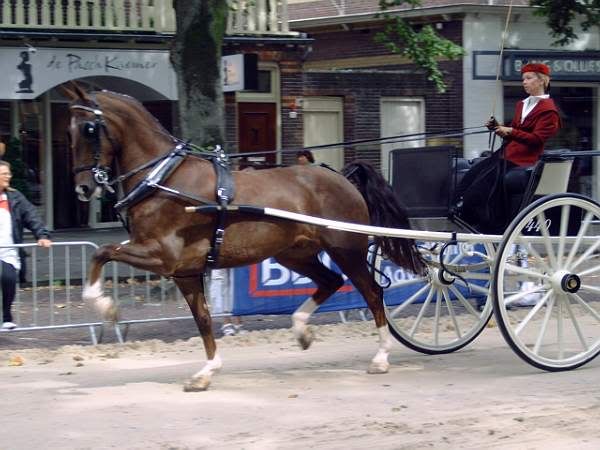
and the glorious scenery: 

Couldn't resist snapping this local woman asleep with her little dog outside her house!! 


And of course not forgetting the wonderful bulb fields. 
Just a few of the reasons why we love to visit Holland!! Last edited: Tue Nov 23, 2010 1:07 am This blog entry has been viewed 5583 times
Soapy fingernails.
Category: Gardening tips. | Posted: Mon Feb 13, 2006 1:43 am If you are, like me, one of those gardeners who doesn't like to wear gloves when gardening then you'll be able to relate to, what I call, 'grubby nail syndrome'. After a day in the garden I can spend an eternity scrubbing the embedded soil from deep under my nails. However, nowadays what I do is: - before going out into the garden I run my nails firmly over the surface of a cheap bar of soap. When I come in to wash my hands at the end of the day the soap under my nails is easily removed and along with it all the dirt!!! This blog entry has been viewed 1074 times
Another use for egg boxes.
Category: Gardening tips. | Posted: Mon Feb 13, 2006 1:35 am As you are no doubt aware ladybirds are one of the most useful predatory insects you can have in your garden. They'll happily feed for hours on those troublesome aphids. To ensure that ladybirds will be resident in your garden from early spring you'll need to provide them with a safe haven in which they can overwinter. The best 'ladybird hotel' is an old egg box, opened out and pushed, upside down, into a hedge, under a shed or somewhere else that it will be relatively dry and undisturbed through the winter months. The ladybirds will find the egg compartments warm, dry and safe as a refuge from predators. This blog entry has been viewed 1387 times
Rose mildew recipe.
Category: Gardening tips. | Posted: Mon Feb 13, 2006 1:27 am Mix 1 tablespoonful of baking powder with 1/4 of a pint of milk and add a teaspoonful of cooking oil. Stir well and pour into a hand sprayer. Liberally coat both sides of the leaves of any affected roses. The baking powder and the milk are the affective ingredients and the oil helps the mixture stick to the leaves. This has worked for me on many occassions and it's totally organic!! This blog entry has been viewed 1821 times
Comments (0) | Leave a Comment | Permalink
You're reading one of many blogs on GardenStew.com.
Register for free and start your own blog today. |
Entries by Category
All Categories
Archives
All Entries |
